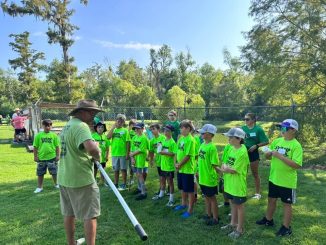
Wild-caught catfish taste better, healthier
Harlon Pearce foresees 2015 as the year of the wild catfish.
“Our key is Des Allemands – the mother of all catfish (areas)” said Pearce, owner of Harlon’s LA Fish in Kenner and chairman of the Gulf Seafood Institute. “We’re making sure of that.”
Consumers started turning the wild catfish market around about two years ago, but Pearce said to make it work requires strategy.
“You’ve got to have the right sizes and be able to market all sizes and we’re doing that now,” Pearce said. “Now we’ve standardized sizing, quality and availability,” which he said took him 1-1/2 years to develop. “And it’s just beginning. It’s going to be good, there is nothing better than wild catfish.”
Mike Wood, director of inland fisheries with the Louisiana Department of Wildlife and Fisheries, agreed that consumers are shifting the market back to wild-caught fish.
“From what I’m getting from some of the people pursuing these wild caught fish is that they like the idea of fish in the wild and not subject to antibiotics and poor quality, such as with imports,” Wood said. “The demand for wild caught isn’t only domestic, it’s particularly prevalent overseas because they realize we have higher quality and are rather proud of that.”
As with Pearce’s efforts to standardize wild-caught fish to make them more accessible to the market, Wood said they are starting a new phase in assessing catfish stocks for better management. Efforts are underway to better determine age and life span.“We need to know the natural rate of mortality to determine how much anglers are influencing their population,” he said. The Department of Wildlife and Fisheries is using new models to more accurately assess the population by using “spines” and “ear bones” to determine age.
Fish are considered transparent to sound, but their ear bones vibrate and this is how they sense movement. Otoliths or the inner ear can determine age, as well as how fast the fish are growing and live.
Learning the dynamics of this population will help better manage the fish, which Wood said is important to today’s consumers. They want the wild caught as a healthier fish, but they also want it ethically.
As for Des Allemands, Wood said the market shift also “absolutely represents a boon for wild caught in the area.”Although chilly waters have contributed to soft production into April, he said demand for wild catfish is hot.
“It’s going to be a rebound of wild catfish because the pond catfish basically doesn’t have the production it used to have,” Pearce said. “Many markets are falling back into wild catfish markets.”
This is a window of opportunity, particularly for Des Allemands’ wild-caught catfish fishermen who nearly disappeared under the market pressures of pond fish growers, according to Pearce.
“The outlook is really good,” he said. “The real job now is finding more fishermen.”
One of them was S.J. Sampey, a major Des Allemands fisherman who was put of business by farm-raised catfish.
“It will help that whole area out and it will help Louisiana by helping the fishermen,” he said. “The stronger they become the stronger our industry becomes.”




Be the first to comment